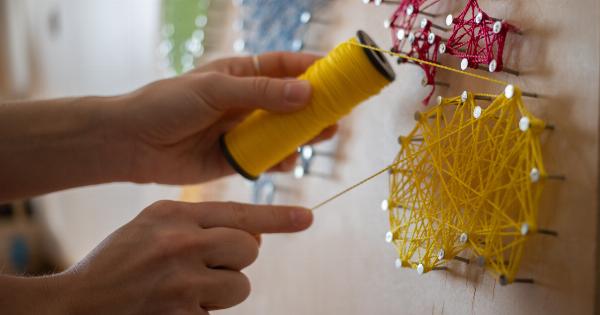Our nails are more than just a canvass for nail art or a functional tool. They can actually provide valuable insights into our overall health.
Changes in the color, texture, shape, or appearance of our nails can indicate underlying health conditions or deficiencies. By observing and decoding the clues our nails offer, we can potentially identify health issues early on and take appropriate action. Here are some key signs to look out for:.
1. Pale or White Nails
If your nails appear pale or white, it could indicate anemia, liver problems, or even malnutrition. Pale nails may also be a symptom of circulation issues or heart problems.
If you notice persistent paleness or whiteness, it is wise to consult a healthcare professional to rule out any underlying health concerns.
2. Yellow Nails
Yellow nails can be a sign of several health conditions. One common cause is a fungal infection, which can result in a yellowish or greenish hue. Smoking can also cause nails to turn yellow over time due to the presence of nicotine.
In rare cases, yellow nails may be indicative of more serious conditions like thyroid disease, psoriasis, or respiratory conditions. If your nails are consistently yellow, it is advisable to seek medical advice.
3. Blue or Purple Nails
Bluish or purplish nails can signify poor circulation or oxygenation in the body. This condition, known as cyanosis, can be caused by lung or heart problems.
If you notice a persistent bluish or purplish tinge to your nails, it is crucial to seek medical attention, as it may indicate a serious medical condition requiring prompt treatment.
4. Brittle or Cracked Nails
Brittle or cracked nails can be caused by a variety of factors such as excessive exposure to water, harsh chemicals, or frequent use of nail polish remover.
However, persistent brittle or cracked nails can also indicate nutritional deficiencies, particularly a lack of biotin (vitamin B7). Taking biotin supplements or consuming biotin-rich foods like eggs, nuts, and whole grains can help improve the strength and quality of your nails.
5. Spoon-shaped Nails
If your nails have a concave shape, resembling a spoon, it may be a sign of iron deficiency anemia. This condition can have various causes, including inadequate iron intake, poor iron absorption, or chronic blood loss.
Consulting a healthcare professional and getting a blood test can help determine if you have iron deficiency anemia and require treatment.
6. White Spots or Lines
White spots or lines on the nails, also known as leukonychia, are usually harmless and often caused by minor trauma or injury to the nail.
However, in some cases, they can be a sign of nutritional deficiencies, including zinc deficiency or low levels of protein. If you notice persistent or worsening white spots or lines on your nails, it may be worth discussing with a healthcare provider.
7. Clubbing
Clubbing refers to a condition where the fingertips become enlarged and the nails curve around the fingertips. This can be an indication of various underlying health issues, including liver disease, lung disease, heart problems, or digestive disorders.
Clubbing can also be hereditary, so it’s essential to consider other accompanying symptoms and consult a medical professional for proper diagnosis and treatment.
8. Pitted Nails
Small depressions or pits on the surface of the nails can be a sign of several conditions, including psoriasis, eczema, or alopecia areata. Pitting can also be associated with connective tissue disorders like rheumatoid arthritis.
If you notice pitted nails along with other symptoms such as joint pain or hair loss, it’s crucial to seek medical advice for a comprehensive evaluation.
9. Ridged Nails
Ridges on the nails are a common occurrence with age. However, if the ridges are prominent, deep, or accompanied by other changes, they may indicate underlying health issues.
Vertical ridges can be a normal sign of aging, while horizontal ridges, known as Beau’s lines, can be caused by severe illness, malnutrition, or trauma. In some cases, horizontal ridges can also be a sign of systemic diseases such as diabetes or thyroid disorders. If you’re concerned about the appearance of ridges on your nails, consulting with a healthcare professional is advisable.
10. Nail Separation
If your nails start to separate from the nail bed, it could be a sign of onycholysis. Onycholysis can be caused by a variety of factors, including fungal infections, psoriasis, an allergic reaction to certain nail products, or thyroid problems.
Seeking medical attention is important to identify the root cause and initiate appropriate treatment.
In conclusion, our nails can provide valuable clues about our overall health. While certain changes or abnormalities in the nails are harmless and temporary, persistent or significant variations may indicate underlying health conditions.
Remember that nail changes alone are not diagnostic, and consulting a healthcare professional is essential for proper evaluation and diagnosis. By paying attention to our nails, we can potentially identify early warning signs and take proactive steps towards maintaining our overall health and well-being.



























